Are Bearded Dragons Good Pets?
Bearded dragons can make fantastic pets! They are active, inquisitive and fascinating to watch. There are a number of species that differ in size and temperament. They can be identified by their hallmark beard which they display when aggravated. The following information is provided for as a general guide.
Bearded dragons are widespread throughout Australia’s arid woodlands and deserts. Over the years they have found themselves becoming more popular in captivity due to their placid nature and hardiness.
On average, their life expectancy ranges from 9-12 years over which they can grow to lengths of 30-50 cm with some individuals living longer and attaining lengths of up to 60 cm. In most cases, they reach sexual maturity between 8-12 months.
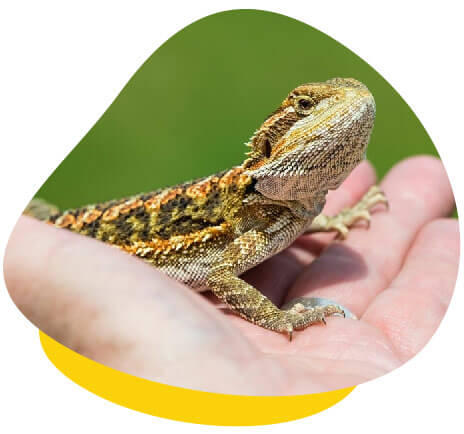
Handling Technique
Most dragons can become very used to being handled, but over handling can be stressful. When handling bearded dragons, support the whole body from underneath, particularly the fore and hind limbs. Avoid squeezing them or holding them too tightly.
Enclosure Guidelines
Before welcoming a bearded dragon into your home, it is advised that you have the enclosure and its requirements set-up.
Creating the Optimal Housing Environment for Your Bearded Dragon
The enclosure set-up depends on the size and age of the dragon. Substrate (enclosure floor covering) options include newspaper, recycled paper cat litter, artificial turf, sand and some commercially produced reptile bedding. All of these options have pros and cons, so the decision often comes down to the individual.
The cage and substrate should be cleaned regularly with ‘spot’ cleaning as required. Any items in the cage should be cleaned with a safe product such as diluted F10 (we commonly recommend a 1:250 ratio with water).
Adult bearded dragons can be housed indoors in their enclosure which should be measuring no less than 1.2-1.8 metres long and 0.6-0.9 metres high, but larger is ideal.
Good ventilation is essential to help with air circulation, temperature and managing humidity. In some climates, they can be kept in outdoor pit environments with access to natural lighting and temperature fluctuations.
It is important to house bearded dragons individually, as they can inflict severe damage to each other, resulting in loss of limbs and even death. Although many say multiple females can be kept together, this is a situation that is not a safe practice and is best to avoid.
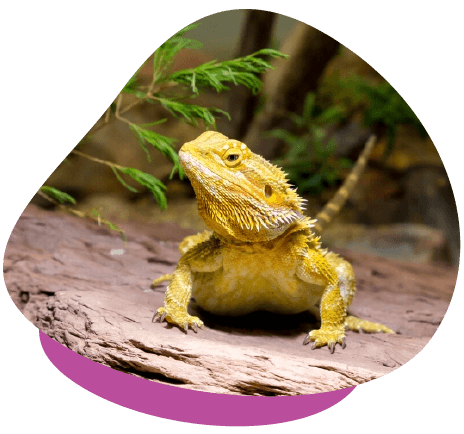
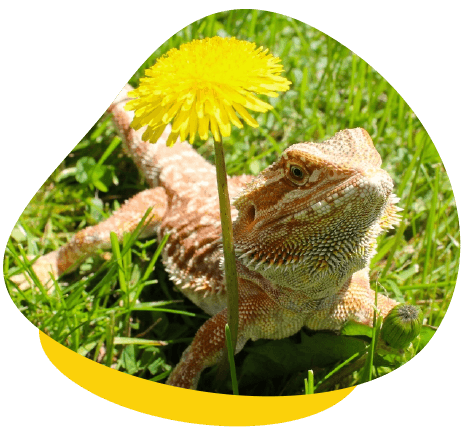
Substrate
There are many suitable substrates (floor covering), and they all have their good and bad properties. Newspaper, butchers’ paper, or paper towels are easy to clean, and pose no risk for obstruction, however they do not allow for digging or enrichment and look unnatural.
Washed playground sand is acceptable, and although many recommend against it because of fear of impaction, this usually only occurs a result of underlying diseases or improper husbandry predisposing to this problem and not a substrate issue in itself.
Specially designed reptile carpet is a good option, although it can be challenging to clean. Astroturf or artificial grasses can fray with the ends being ingested causing obstructions or can get wrapped around digits causing damage, so it to be needs to be used with caution.
Vermiculite without chemicals or fertilisers is often used as a substrate for breeding/incubation purposes. Still, it can be used as a general substrate that is low risk, has good odour control, is easy to clean and relatively cost-effective.
It is suggested to avoid calci-sand, gravel, corncob, pea gravel, crushed walnut and shavings made of pine or cedar in the enclosure.
Furnishings
Multiple options for your dragon to hide under that are located on both the warm and cool end of the enclosure are imperative to minimise the risk of stress. These should be easy to remove so that you can check on your dragon as needed, and the furnishings should be cleaned regularly.
In the wild, most bearded dragons spend their time in bushes, trees or basking on rocks. If they get too hot, they will sometimes burrow underground to seek protection. A captive enclosure must offer these facilities. Thick branches, rocks, hollows, basking sites and climbing facilities are essential to minimise stress and provide choice for self-regulation and environmental enrichment.
It is not recommended to allow your dragon to roam around the house, or to be out of the enclosure unsupervised. Outside of the enclosure they are at risk of overcooling, escaping, trauma, ingestion of foreign or toxic material and also potentially spreading zoonotic diseases such as Salmonella.
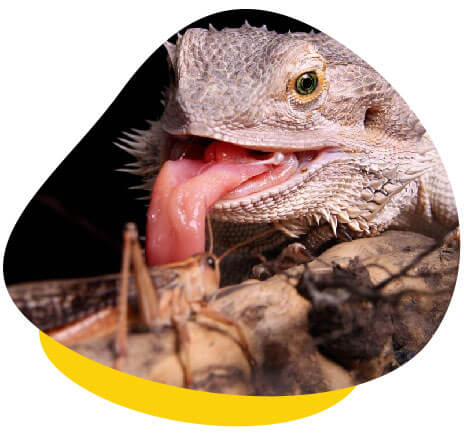
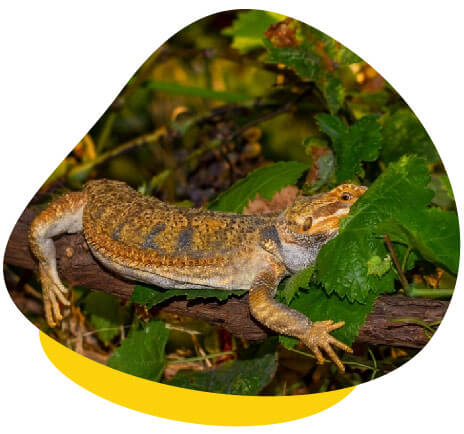
Lighting
It is recommended that you supply a day-night cycle for your bearded dragon of 12 hours of light and 12 hours of darkness but adjusting this cycle to match natural cycles is also possible and may contribute to more natural behaviour. This day-night cycle is also essential for normal mental health.
Bearded dragons have strict requirements concerning UVB light supplementation as they rely on UVB light rays to be able to produce vitamin D3 in their skin adequately. Vitamin D3 is essential for proper calcium metabolism in dragons and to help prevent secondary nutritional hyperparathyroidism, also known as metabolic bone disease.
UVB light can be provided by artificial ‘UV-lights’; however, there is no substitute for natural unfiltered sunlight, and it is recommended that dragons should receive sunlight for 20-30-minute periods at least 2-3 times a week.
When doing this, ensure the dragon is in an escape-proof/predator-proof cage. The sunlight should not pass through any glass or plastic as these will filter out UVB rays. Make certain the dragon has access to shade and cannot overheat. Reptiles that cannot readily escape the heat and are at risk of hyperthermia and organ shut down which has life-threatening consequences
Most artificial UV sources designed for reptiles need to be placed at a minimum length from the reptile obtaining the light. Most manufacturers list these requirements on their packaging or websites. Furthermore, the effective UVB emission lifespan of these lights is usually in the vicinity of 6-12months, so the manufacture’s guidelines need to be followed.
Heating
Having a large enough enclosure with properly placed branches, rocks, hides and shelters, allows your dragon to thermoregulate, keeping its body temperature in its preferred optimal temperature zone (POTZ). Therefore, bearded dragons must be provided with a ‘temperature gradient’ in their enclosure. This means they need a ‘hot’ end and a ‘cool’ area. Temperatures should be monitored with thermometers at both of these ends, and adequate ventilation is important.
The hot basking area end should be heated with a thermostatically controlled reflector globe (reptile specific flood lamp or reptile specific spotlight) to create a basking temperature of 40-45C.
To avoid thermal burns, the basking lamp should not be positioned too close to your lizard, and the basking area should be as large as your bearded dragon, so the entire body heats up evenly with no areas of excessive heat.
The cool end of the enclosure should be around 20-24C to allow your dragon to escape the heat if desired. Overnight temperatures should not fall below 20C at the hot end of the cage. The use of weaker ceramic heat lamps may be required to achieve this.
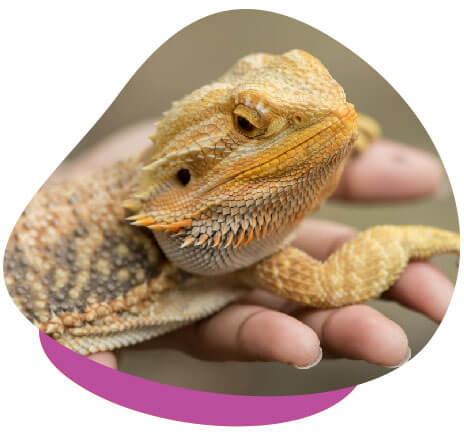
Diet
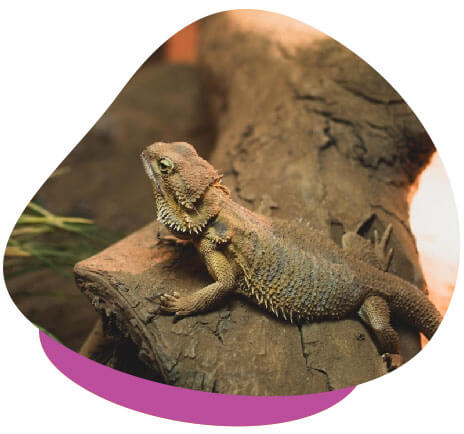
What Do Bearded Dragons Eat, and How Frequently Should You Feed Them?
Most bearded dragons are omnivorous, which means they eat both plant and insects. They should be fed a variety of insects (crickets, roaches, moths, silkworms, beetles and black soldier fly larvae) which can be rotated throughout their feeding schedule.
You can also provide a mixture of leafy salad greens and vegetables such as dandelion, endive, romaine, spring mix, mustard greens, microgreens, beetroot tops, Asian greens, collard greens carrots, parsley, basil, squash, zucchini with no or only a small amount of fruit occasionally such as blueberries or raspberries.
Insects should be gut-loaded for 12-24 hours (fed a ‘gut-loading powder or formulated diet’ that then increases their nutritional value).
The insects can be lightly dusted 2-3 times per week with a calcium powder that does NOT contain Vitamin D or phosphorus and given immediately. This will aid in maintaining the ideal calcium-phosphorus balance of approximately 2:1.
Feeding Hatchlings
Hatchlings less than 2 months of age should be fed a small number of insects two to three times per day and offered finely chopped mixture of the greens and veggies listed above. They may not eat this, but many will.
Feeding Juveniles
Juveniles less than 4 months of age can be offered 70 % insects (the insect’s size should be less than the width of the dragon’s head) and 30% mixed chopped up vegetables.
Feeding Adults
Bearded Dragons from 4 months of age to adulthood can be fed mixed plant matter daily and mixed insects 1-2 times per week (maximum 10-15).
It is essential not to leave any uneaten insects in your dragons’ enclosure as these can cause serious harm to them. It, therefore, may be advisable to feed them insects in a separate feeding enclosure. It is crucial to monitor your dragons’ weight to track their growth rate but also to reduce the risk of your dragon becoming obese.
For those fussy dragons, there are some formulated diets on the market that can supplement their diet. These should make up no more than 50% of the overall diet.
It is recommended to offer food in the mornings so that digestion occurs during the warmest part of the day. Multivitamin powder can be sprinkled on the vegetables once every two weeks.
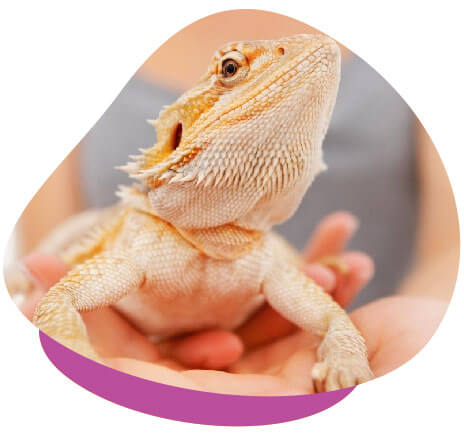
How Often Should a Bearded Dragon Visit the Vet?
It is recommended that you have your dragon vet checked every 6-12 months. Regular health checks will allow for the early detection of disease and illness.
When visiting your reptile vet, your bearded dragon should be transported individually in tied cotton bags or a small and secure box or plastic tub with adequate ventilation. Ensure that they can’t escape or overheat.
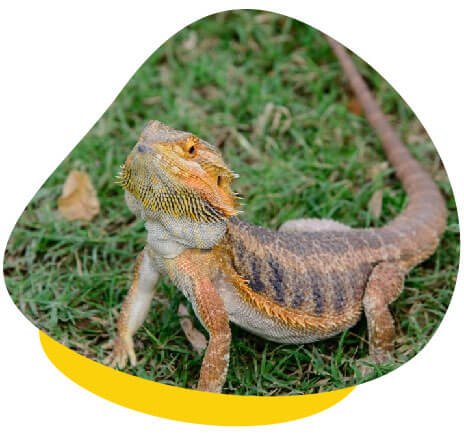
Brumation
During the cooler months, wild bearded dragons will often slow their metabolism down in response to the lower temperatures, shorter day length and decreased available food and water. Despite a more controlled environment in captivity, millions of years of instinct can still take over and cause your dragon to enter this state slowed state.
During this period, your dragon may not eat, drink, defecate, or move for several weeks. They may bury themselves completely underground; go to the darkest coolest part of the enclosure becoming very unresponsive.
A healthy dragon can safely undergo brumation but young dragons (under 12 months old) or those that are not in top physical condition should not be allowed to enter this state and you should seek veterinary advice if suspected.
It is recommended that your bearded dragon is examined prior to their brumation period.
Do Bearded Dragons Need to Be Quarantined?
Any time a new reptile is introduced into your home or collection, you must quarantine it before introducing it into their new environment. This will allow you to identify if the reptile has any notable health issues from its previous home.
This should be a minimum period of 3 months, but a 6-month quarantine period may be safer. Quarantine periods can be shortened if certain screening tests are performed, such as a physical exam, internal and external parasite checks, and viral testing.
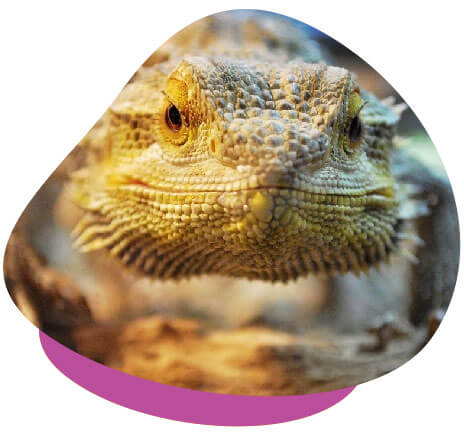
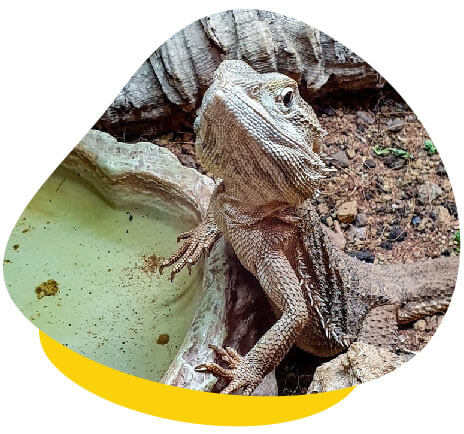
Common Medical Conditions
Like any pet, bearded dragons can be susceptible to a number of medical conditions including:
| Metabolic Bone Disease | Gout |
| Dysecdysis (abnormal shedding) | Reproductive Issues (i.e. Follicular Stasis) |
| Regurgitation | Trauma |
| Dental Disease | Aneurysm |
| Femoral Pore Impaction | Fatty Liver (Hepatic Lipidosis) |
| Heart Disease | Adenovirus- Agamid Adenovirus 1 |
| Parasites | Cancers |
If you have any further questions about caring for your bearded dragon, please don’t hesitate to contact us.

